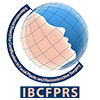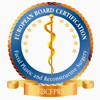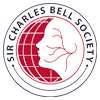Movement disorders can lead to serious health problems that make daily life difficult for individuals. Conditions that cause involuntary muscle contractions, especially dystonia, can significantly reduce quality of life if left untreated. At this point, selective myectomy surgery emerges as an effective solution offered by modern medicine. If you want to get detailed information about this very beneficial treatment and find answers to your questions, you can take a look at our content.
What is Selective Myectomy Surgery?
Selective Myectomy Surgery is a surgical procedure performed to treat disorders caused by involuntary contractions and spasms in the muscles. This surgery is usually applied in the treatment of neurological movement disorders such as dystonia. In this context, Selective Myectomy is based on the surgical removal or deactivation of overactive muscle fibers in certain parts of the muscles.
During the surgery, only the muscle groups that cause the problem are intervened in, and healthy muscle tissue and function are tried to be preserved. In this way, involuntary movements or spasms are reduced, while motor control and functional movements are improved. The procedure is usually effective in localized dystonia types and is frequently applied to areas such as facial muscles, neck (cervical dystonia) or eye area (blepharospasm). In this way, patients' quality of life can be improved.
How is Selective Myectomy Surgery Performed?
Selective myectomy surgery, which is applied to cut muscles, is usually performed under general anesthesia. After general anesthesia is applied to the patient, incisions are made in the surgical areas (inside the mouth, in front of the ear). After the incisions are made, they are advanced towards the subcutaneous area and the muscle, fat and skin are separated from each other to reach the nerves. Afterwards, the muscles affected by the nerve branches and the connections between them are evaluated and when the correct nerve and muscle are found, a part of the muscle is removed to sever the connection. Sometimes, depending on the situation, it is possible to completely cut the muscle. After the cutting and removal process, the incisions are stitched. The incisions can be in the mouth or in front of the ear. The surgery is concluded by placing aesthetic stitches. All of these procedures take approximately 3 hours. If other methods are to be applied to the patient, the duration will be a little longer.
What Are The Risks Of Selective Myectomy Surgery?
Risks in surgical interventions vary depending on different factors. Selective myectomy surgery also carries some risks in itself. These risks. Depending on your doctor's experience and the number of successful surgeries, the possibility of seeing these risks is eliminated. In this context, the possible risks of selective myectomy surgery are as follows;
- During the surgery, there may be deformations in other muscles or nerves. However, these deformities do not pose a life-threatening risk to the patient..
- Although the risk of infection is common in surgeries, the doctor's attention to sterilization and disinfection eliminates this risk. If there is redness, pain and discharge in the wound area, it is recommended that you contact your doctor.
- The application focusing on facial symmetry may cause the movements of your smile muscles to be limited after the surgery.
- Some incision scars take time to fade and become invisible. The patient's skin type is important in the healing of scars. After living with the scar left by the incision for about two years, the stitch marks will become invisible.
If your doctor is an expert in selective myectomy surgery, these complications are unlikely for you. The risks will not occur thanks to the care he shows before and after the surgery.
Which Muscles Are Most Commonly Targeted in Myectomies?
Selective myectomies used among smile restoration and smile revitalization techniques must be applied to some muscles. Around the mouth;
Depressor Anguli Oris (DAO) Muscle
In addition to being known as the lower lip muscle, it is also known for its strong feature. Pulling the corner of the mouth downwards causes asymmetry during the smile. Applying force to the facial muscles used for smiling allows selective myectomies to be applied. Taking the patient's condition into account, myectomy is applied to the depressor anguli oris on the healthy side. After the surgery, the face can relax without tenseing too much and it also helps the smile.
Depressor Labii Inferioris (DLI) Muscle
If the other side of this muscle located at the corner of the mouth is weak, its activity will decrease. Therefore, when the muscle with decreased activity and the strong muscle contract at the same time, asymmetry will be seen in the smile. When selective myectomy surgery is performed on this area targeting the lower lip, symmetry can be achieved in the lower lip. The muscle that is seen as hyperactive during smiling will not prevent smiling.
Buccinator Muscle
The buccinator muscle located inside the cheek is tighter in patients with synkinesis. When the two sides are checked in these patients, it is noticed that there is tension in the area where the buccinator muscle is tight and the tension experienced in the inner part causes constant biting of the inside of the cheek. This muscle in question does not only affect the inside of the mouth. It also pulls the corner of the mouth backwards. Since this causes asymmetry during smiling, the muscle is cut and released to reduce the tension in the mouth. Since there is less tension in the inner part, the training of biting the mouth is also eliminated. Moreover, the pain due to the tension experienced in the inner part is also reduced or completely eliminated. When a part or all of the muscle causing synkinesis is cut, the patient also feels relieved.
What Does Targeted Muscle Destruction Mean? What is the Difference From Myectomy Surgery?
Excessively strong muscles or muscle groups that disrupt the work of other muscles can be destroyed in a controlled manner. After being sure about the targeted muscle before and during the surgery, the muscle in that area can be cut or some nerves can be removed from inside the muscle. In this context, since only one muscle is treated, it may be inappropriate to talk about surgery in the full sense. For this reason, local anesthesia may be preferred instead of general anesthesia depending on the situation.
Selective myectomy surgery is mostly performed under general anesthesia and incisions in myectomy surgery can be made in the ear canal and facelift surgery areas. The scope of the surgery will also change depending on where the muscle is located and the method to be applied. More than one muscle is evaluated here. The aim is to prevent permanent damage from affecting other muscles and nerves.
Why Are Myectomies Performed for Patients With Synkinesis?
The presence of synkinesis in the patient causes excessive facial contraction or involuntary muscle movements. In order to prevent this, the connection of the strong muscle must be severed or the muscle must be weakened. Therefore, graft transplantation or muscle transplantation is often the primary choice in patients with facial paralysis. The opposite is the case in selective myectomies. The patient is dead, weak or extremely strong. If the muscle causes involuntary contraction and causes facial asymmetry, the first choice will be selective myectomy surgery.
At this point, excessively contracted muscles may cause pain and discomfort in the contracted area at the end of the day in some patients. Since these muscles, which pull and strain the facial muscles excessively, disrupt the symmetry of the face, it will be necessary to release the muscle. In this way, the coordination disorder in the muscles will be eliminated and the pain experienced due to excessive pulling will also pass. The doctor will evaluate the need for selective myectomy surgery in patients with synkinesis after examination according to the patient's health condition.
What Are the Advantages of the Myectomy Procedure?
The selective myectomy procedure applied to the patient provides advantages in many ways. The most important of these advantages is that patients do not have difficulty smiling for the most part. In this direction, the advantages of the myectomy procedure in every aspect are as follows,
- This problem is not seen in patients who bite and chew inside their mouths after myectomy. The mouth is not tense but relaxed.
- The constant tension of some muscles turns into pain and fatigue for the patient. With myectomy, muscle tension is relieved and no pain is felt.
- Some types of synkinesis prevent smiling because they pull the midface muscles downward. With myectomy, the smile muscles can be used better.
- Synkinesis patients cannot use many facial muscles due to muscle spasm. With surgery, less effort is required and effective results are obtained. will be taken.
- If there is discomfort due to muscle tension in the neck and lower face, this problem can be eliminated with myectomy.is removed.
What is the Healing Time from Myomectomy Surgeries Performed Through the Mouth?
One of the easiest selective myectomy surgeries performed on the patient is the one performed in the mouth. The procedure is completed in a short time without the patient even needing to stay in bed. The application area is anesthetized and an incision is made through the mouth. Since the incisions are made in the mouth, the patient does not have to worry about the visibility of the incision scar and is discharged and sent home the same day after the operation. At the same time;
- The healing process is accelerated when the patient does not consume foods that will tire the mouth. Therefore, hard, shelled and hard to chew foods should be avoided. It is important not to consume hard foods such as nuts and chips for 1 month.
- Since smoking and alcohol consumption negatively affect the healing process, they should not be used for about 1 month.
- Antibiotics are used for the period recommended by the doctor for the risk of infection after the surgery.
- Gargling is recommended for 2 weeks at least 4 times a day for oral hygiene.
- Since the stitches are aesthetic stitches, they do not need to be removed. Depending on the patient's health and body resistance, the stitches will completely disappear between 14 and 21 days.
Selective Myectomies After Surgery
After the surgery, you will stay in the hospital for 1 day and be discharged the next day. Drainage is used to prevent blood and fluid leakage from the stitches. The patient can go home after the drainage is removed. Some changes may be seen in Selective myectomy after surgery. Complications and changes will heal over time.
- Swelling may be seen in the first 4 days after the surgery. In this case, applying a cold compress will reduce the swelling.
- It is important to sleep with your head up for a while after surgery to prevent swelling from increasing. Sleeping with a pillow will relax the patient.
- A mask is given to wear at home day and night. This mask must be worn continuously for the first 15 days, day and night.
- Applying the creams prescribed by the doctor will speed up the recovery.
- It is recommended not to smoke or drink alcohol for the first month.
- It is necessary to start physical therapy programs with a facial therapist according to the period determined by the doctor. In this way, the effect of the surgery will also increase.
What is Recovery time After Platysma Myectomy?
Since platysma myectomy is a different method, the recovery period is also different from selective myectomies. In platysma myectomy, patients may stay in the hospital for 1 day. Depending on the situation, there are patients who are discharged on the same day. It is natural for swelling to occur for 2 to 3 weeks after surgery. The swelling goes down in a short time with cold compresses. Daily life routines can be started after 3-4 days. However, patients can engage in heavy and strenuous activities after 1 month.
Selective Myectomies FAQ
What should I expect after myectomy surgeries through the mouth?
Selective myectomy surgery performed through the mouth also closely concerns the lip muscles and chewing muscles. It is possible to lose sensation in the lower lip after oral myectomy. However, there is nothing to worry about. You will feel the lower lip again after a few months. Although the procedure inside the mouth causes the lower lip to swell, the swelling decreases over time. It is possible to feel hardness in the incisions. Regular gargling is recommended to prevent the wounds in the mouth from becoming infected. After the incisions have completely healed, the area where the incisions were is massaged 3 or 4 weeks later. Thus, the incision scars also disappear in a short time.
Where are the incisions placed for myectomy of the platysma muscle?
Where the incisions are made in face and neck lift, those areas are also preferred for the platysma muscle. When the incision is made in this area, the scars are more easily hidden. The preferred incision locations in face and neck lift help to provide better access to the nerves in the face and neck. This surgery, which is often performed together with selective neuroectomies, allows multiple procedures to be performed better.
How long will the effects of this surgery last?
The aim of selective myectomy surgery is to leave a permanent effect. The patient's condition, the success of the doctor, and the adaptation of the muscles and nerves over time will affect the permanence. However, what is important here is the physical therapy programs after the surgeryis to continue. The most important thing to activate the muscles and increase the effect of the surgery is therapies and programs. If the muscles and nerves re-branch, permanent improvement will be seen on the face.
Are myectomies also performed on the healthy side?
Myectomies are not only performed on the problematic or traumatized area. Selective myectomies can also be performed on the healthy side. Sometimes some muscles on the healthy side do not allow the other side to move. In order to increase the mobility of the side with muscle disorder, the muscle on the healthy side can be weakened or cut. The doctor will make the best decision according to the patient's muscle and nerve condition.














